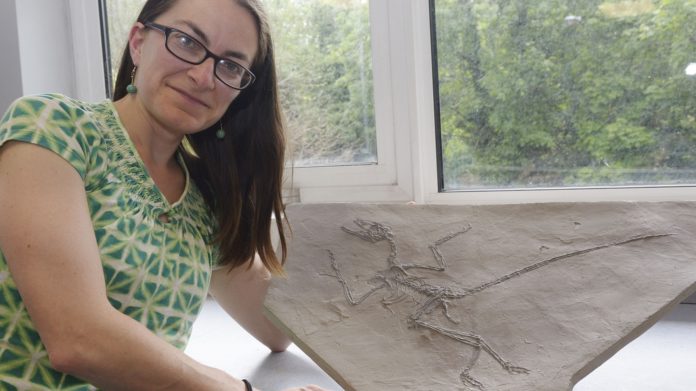In a new study conducted by palaeontologists from University College Cork (UCC) in Ireland have studied the fossil cells, and dandruff from modern birds, with powerful electron microscopes. Just like human dandruff, the fossil dandruff is made of tough cells called corneocytes, which in life are dry and full of the protein keratin. They suggest that the modern skin feature evolved sometime in the late Middle Jurassic, around the same time as a host of other skin features evolved.
UCC’s Dr. Maria McNamara said, “The fossil cells are preserved with incredible detail – right down to the level of nanoscale keratin fibrils. What’s remarkable is that the fossil dandruff is almost identical to that in modern birds – even the spiral twisting of individual fibers is still visible.”
“There was a burst of an evolution of feathered dinosaurs and birds at this time, and it’s exciting to see evidence that the skin of early birds and dinosaurs was evolving rapidly in response to bearing feathers.”
The dandruff is the main proof of how dinosaurs shed their skin. The feathered dinosaurs contemplated – Microraptor, Beipiaosaurus, and Sinornithosaurus – plainly shed their skin in flakes, similar to the brisk riser Confuciusornis examined by the group and furthermore early flying creatures and well-evolved creatures, and not as a solitary piece or a few substantial pieces, as in numerous advanced reptiles.
Dr. McNamara led the study, in collaboration with her postdoctoral researcher Dr. Chris Rogers; Dr. Andre Toulouse and Tara Foley, also from UCC; Dr. Paddy Orr from UCD, Ireland; and an international team of paleontologists from the UK and China. The study is published today in the journal Nature Communications.
Co-author Professor Mike Benton, from the University of Bristol’s School of Earth Sciences, said: “It’s unusual to be able to study the skin of a dinosaur, and the fact this is dandruff proves the dinosaur was not shedding its whole skin like a modern lizard or snake but losing skin fragments from between its feathers.”
Modern birds have very fatty corneocytes with loosely packed keratin, which allows them to cool down quickly when they are flying for extended periods. The corneocytes in the fossil dinosaurs and birds, however, were packed with keratin, suggesting that the fossils didn’t get as warm as modern birds, presumably because they couldn’t fly at all or for as long periods.
